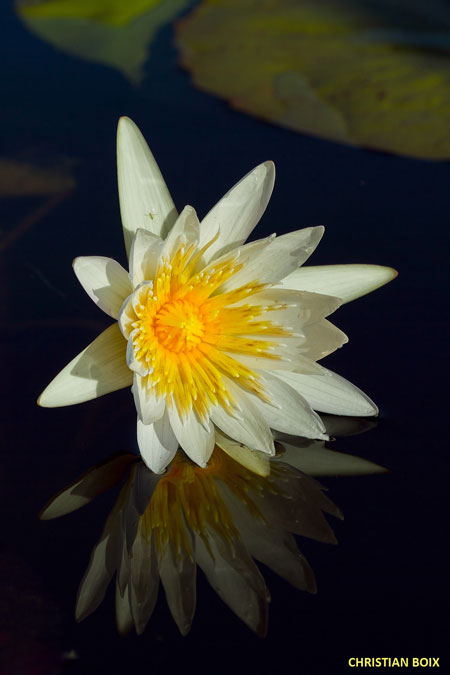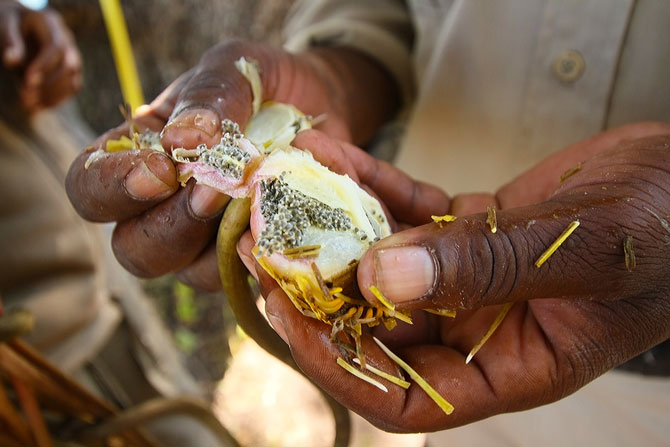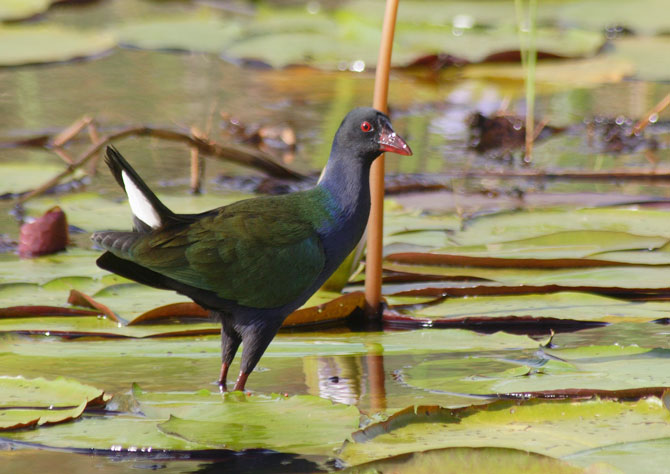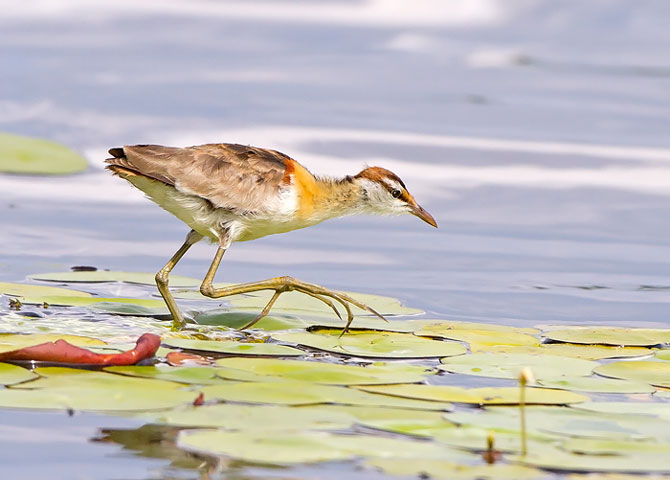I must admit with a certain degree of embarrassment that I once believed that water lilies were just part of the Delta’s ‘décor’. However, during a recent walking safari in the area, I was fortunate enough to be led by a trail guide who shared his knowledge of these precious plants.

Anyone who has been to the Okavango Delta will have noticed that water lilies crop up everywhere. You may even have nearly toppled over your mekoro trying to take the quintessential picture of this gorgeous bloom. Few holiday settings are more evocative and relaxing than a water lily-filled lagoon, and whilst slicing through this heavenly bloomscape with all the time in the world, I began to ask a question. “Why are the lilies either purple or white? Are they two different species?”

Witnessing all this beautiful diversity, my good guide, who had already sensed my new surge of curiosity, had pre-empted the situation and steadied the mokoro as I wriggled and turned to face him to let rip another volley of queries regarding the more intimate details of sexual encounters of the water lily kind. Fascinated by my curiosity, he continued to dish out reels of fascinating information about pollination in water lilies.

In the case of the water lily I was admiring, the pollen does not get released the day that the flower blooms. Instead, first, a fluid is secreted that covers the centre of the flower and its female parts. Insects, lured by the plant’s fragrance, land on the smooth angled petals, and slide into the fluid below. If the visiting insect had already visited a mature plant and come bearing pollen from another water lily then the visiting pollen dissolves into the fluid, and the water lily is fertilised. The fluid is absorbed and the visiting insect is free to go, carrying new pollen from this now fertilised water lily. It is during this transition that the colouration of the water lily changes from white to purple.

After pollination, the stem of the water lily starts recoiling slowly, pulling the flower underwater. Here, away from nibbling insects, the fruit starts developing into a spongy berry that contains masses of seeds – up to 2,000 seeds may be stored in each fruit.


When the seeds are ripe and ready to disperse, the fruit opens and releases its contents into the water current. Seeds float away aided by an aril (a rather clever floating device that contains air pockets to keep them buoyant). They can travel for miles in the current or reach even further if they are eaten and digested by a pigmy goose. Either way, they eventually become waterlogged, find a muddy bank and germinate into a new plant.

The leaves shade the water below, keeping water temperatures cool and thus allowing for a more oxygenated water environment underneath them. This is an environment that many critters enjoy and exploit.



Water lilies also grow and spread vegetatively by means of an ever-growing creeping rhizome. These rhizome makes delicious and flavoursome flour when dried and pounded. The flour, when baked, makes crispy delicious pancakes. The young leaves and flower buds, if well prepared, make a scrumptious vegetable side dish, and the seeds may be eaten fried or raw.


Later that day, as I sit under an ancient nyala berry tree and stare into the coals of a fire and dinner aromas fill the air, I cannot help but think about the magic and beauty of Africa. Those able to set off into the Delta in a mokoro, consciously leaving behind our woes, should spend time to wonder at the unpretentious as a water lily.

To comment on this story: Login (or sign up) to our app here - it's a troll-free safe place 🙂.![]()






